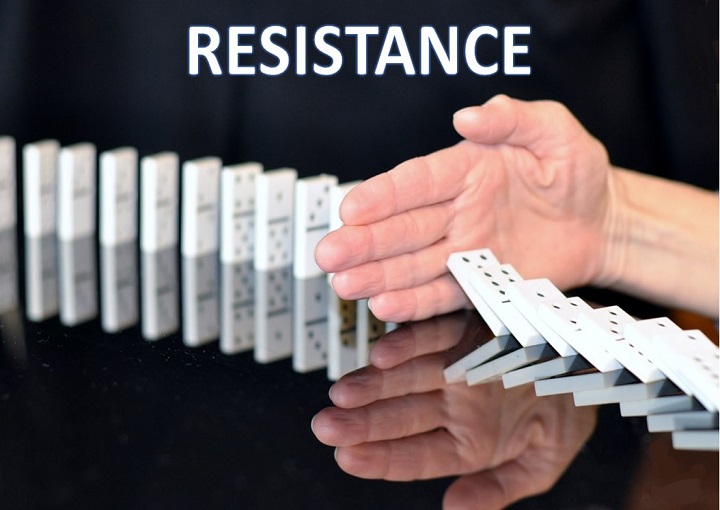Engineering is a vast field that deals with various types of resistances. Engineers encounter different types of resistance in their everyday work, and it’s essential to understand what they are, how they work, and how they can be overcome. This article will delve into resistance in engineering, including its types, applications, and how to overcome them.
Introduction
Resistance is a force that opposes motion or action. In engineering, resistance can manifest itself in different ways, including friction, electrical, thermal, and fluid resistance. Understanding how resistance works is critical to engineers in various fields, from civil and mechanical to electrical and aerospace engineering. This article aims to provide a comprehensive guide to resistance in engineering, including its types, applications, and how to overcome it.
What is Resistance in Engineering?
Resistance is a force that opposes motion or action. It is an essential concept in engineering, as it affects the design and operation of machines, devices, and systems. Resistance can be defined as the degree to which a material or object opposes the flow of current, heat, or fluid.
Types of Resistance in Engineering
i. Frictional Resistance
Frictional resistance is a type of resistance that opposes motion between two surfaces in contact. This type of resistance can occur in different forms, including dry friction, fluid friction, and rolling resistance. Frictional resistance affects the efficiency and performance of machines, devices, and systems. Engineers can reduce frictional resistance by using lubricants, optimizing surface roughness, and designing parts with a low coefficient of friction.
ii. Electrical Resistance
Electrical resistance is a measure of how much a material or object opposes the flow of electric current. This type of resistance is an essential concept in electrical engineering, as it affects the design and operation of electrical circuits and systems. Electrical resistance can be reduced by using conductive materials with a low resistivity, optimizing the cross-sectional area of conductors, and minimizing the length of wires.
iii. Thermal Resistance
Thermal resistance is a measure of how much a material or object opposes the flow of heat. This type of resistance is an essential concept in thermal engineering, as it affects the design and operation of heat exchangers, insulation materials, and heating and cooling systems. Thermal resistance can be minimized by using materials with a low thermal conductivity, optimizing the geometry and orientation of heat transfer surfaces, and increasing the surface area of heat transfer.
iv. Fluid Resistance
Fluid resistance is a type of resistance that opposes the flow of fluids, such as liquids and gases. This type of resistance is an essential concept in fluid mechanics, as it affects the design and operation of pipes, valves, and pumps. Fluid resistance can be minimized by optimizing the flow path, using streamlined shapes, and reducing the roughness of surfaces.
Applications of Resistance in Engineering
i. Brakes in Vehicles
Frictional resistance is used in brakes in vehicles to slow down or stop the wheels. When the brakes are applied, the brake pads exert a force on the brake rotor, creating frictional resistance that slows down the wheels.
ii. Electrical Wiring
Electrical resistance is an essential concept in electrical wiring, as it affects the current-carrying capacity and voltage drop of the wires. Electrical engineers must design electrical circuits with the appropriate wire gauge, length, and material to minimize resistance and ensure efficient current flow.
iii. Heat Transfer in Buildings
Thermal resistance is an essential concept in building insulation, as it affects the efficiency of heating and cooling systems. Thermal engineers must design insulation materials with low thermal resistance to minimize heat transfer and maintain comfortable indoor temperatures.
iv. Flow Control in Pipes
Fluid resistance is an important concept in the design and operation of pipes, valves, and pumps. Engineers must design piping systems with appropriate diameters, flow rates, and valve positions to minimize fluid resistance and ensure efficient fluid flow.
Overcoming Resistance in Engineering
Engineers use various techniques to overcome resistance in engineering. Here are some ways to reduce frictional, electrical, thermal, and fluid resistance.
i. Reducing Frictional Resistance
-
- Using lubricants to reduce surface friction.
-
- Designing parts with a low coefficient of friction.
-
- Optimizing surface roughness to reduce friction.
ii. Decreasing Electrical Resistance
-
- Using conductive materials with low resistivity.
-
- Optimizing the cross-sectional area of conductors.
-
- Minimizing the length of wires to reduce resistance.
iii. Minimizing Thermal Resistance
-
- Using materials with low thermal conductivity.
-
- Optimizing the geometry and orientation of heat transfer surfaces.
-
- Increasing the surface area of heat transfer to improve heat transfer efficiency.
iv. Improving Fluid Resistance
-
- Optimizing the flow path to reduce turbulence and pressure drop.
-
- Using streamlined shapes to minimize drag.
-
- Reducing the roughness of surfaces to minimize friction.
Conclusion
Resistance is a fundamental concept in engineering that affects the design and operation of machines, devices, and systems. Engineers encounter different types of resistance, including frictional, electrical, thermal, and fluid resistance. Understanding how resistance works is crucial to minimize inefficiencies and optimize performance. By applying various techniques to overcome resistance, engineers can design more efficient and effective machines, devices, and systems.
FAQs
1. What is resistance in engineering?
Ans. Resistance is a force that opposes motion or action. It is an essential concept in engineering that affects the design and operation of machines, devices, and systems.
2. What are the types of resistance in engineering?
Ans. There are four types of resistance in engineering: frictional, electrical, thermal, and fluid resistance.
3. How can engineers reduce frictional resistance?
Ans. Engineers can reduce frictional resistance by using lubricants, optimizing surface roughness, and designing parts with a low coefficient of friction.
4. What is the importance of minimizing thermal resistance in building insulation?
Ans. Minimizing thermal resistance in building insulation improves the efficiency of heating and cooling systems, which results in more comfortable indoor temperatures and energy savings.
5. What are the techniques for improving fluid resistance?
Ans. Engineers can improve fluid resistance by optimizing the flow path, using streamlined shapes, and reducing the roughness of surfaces.

